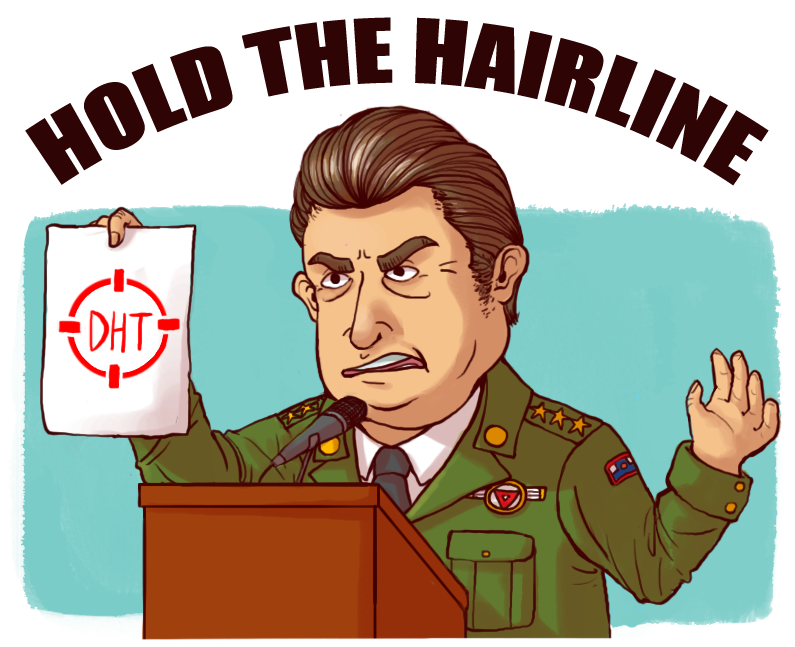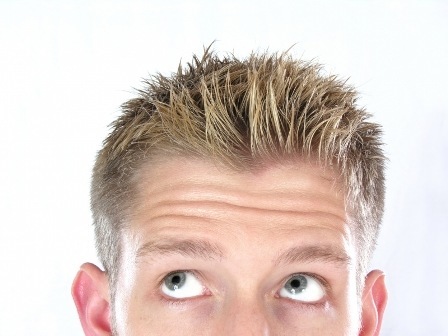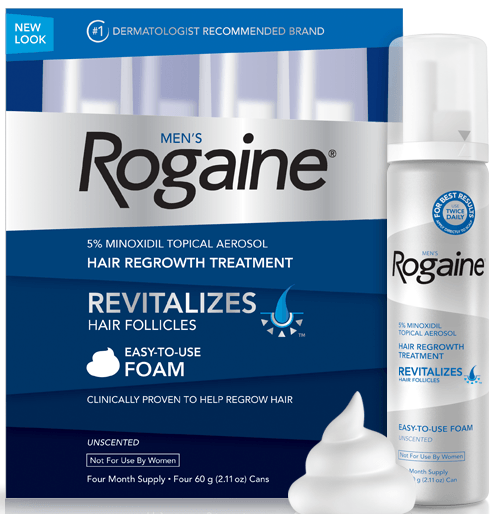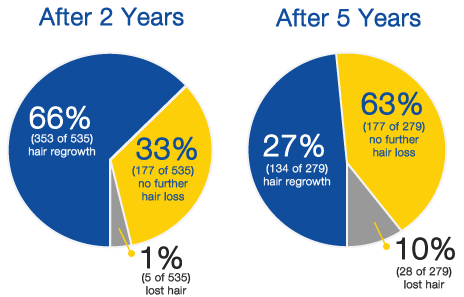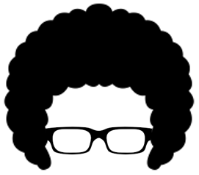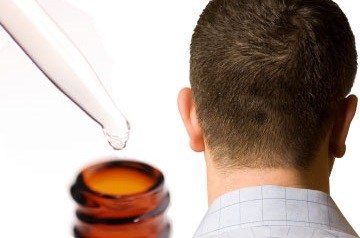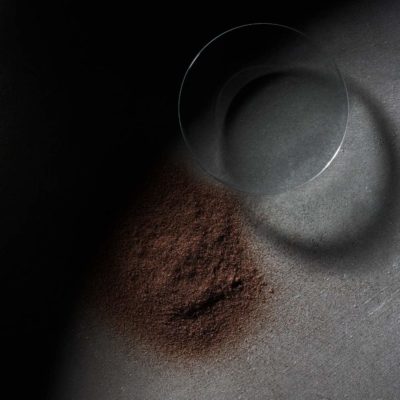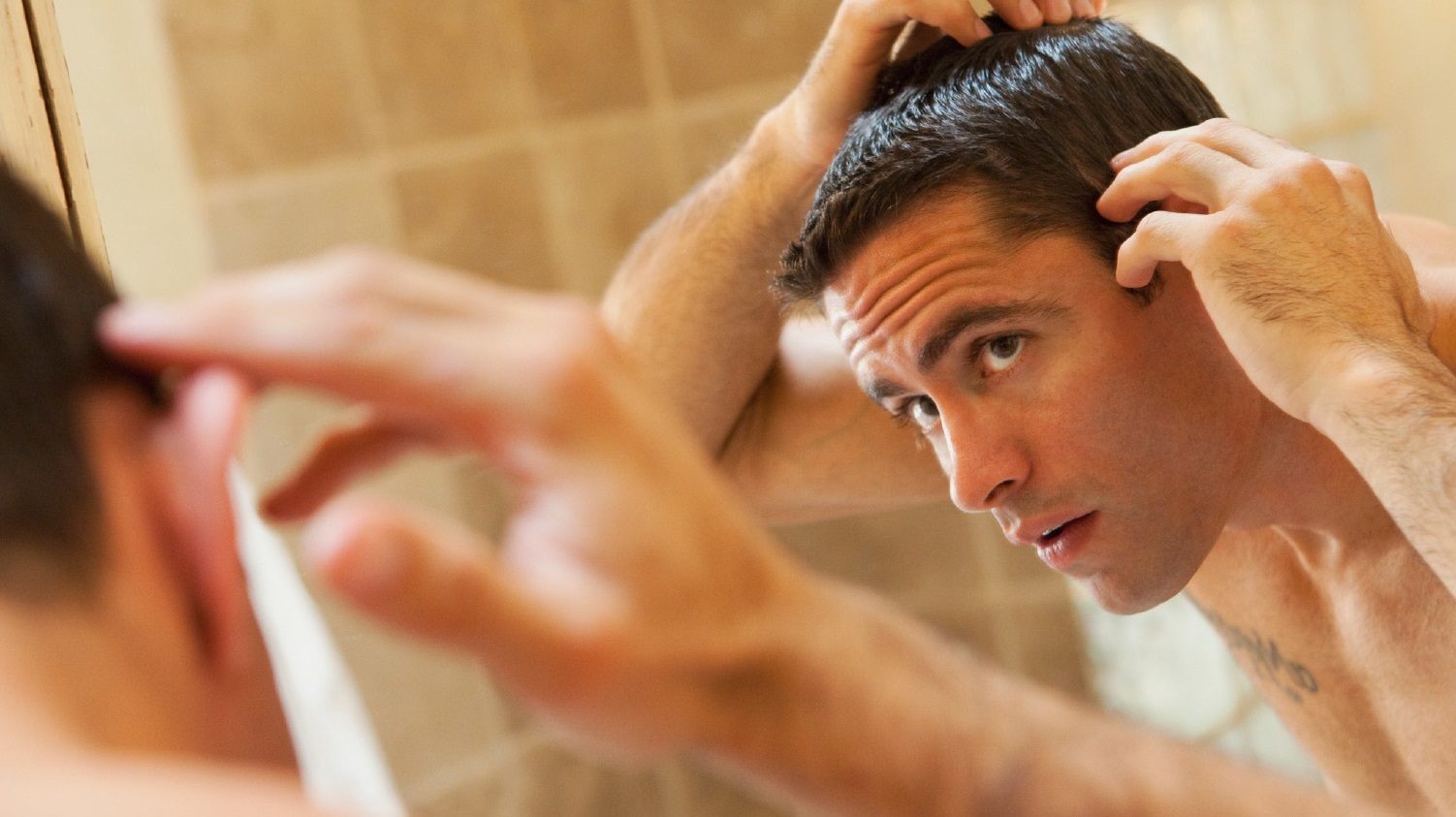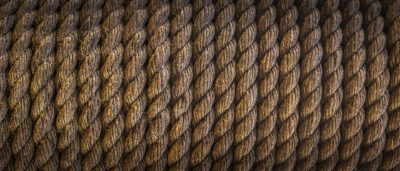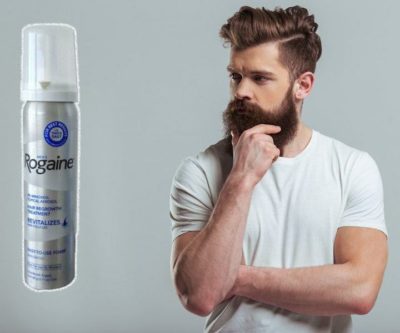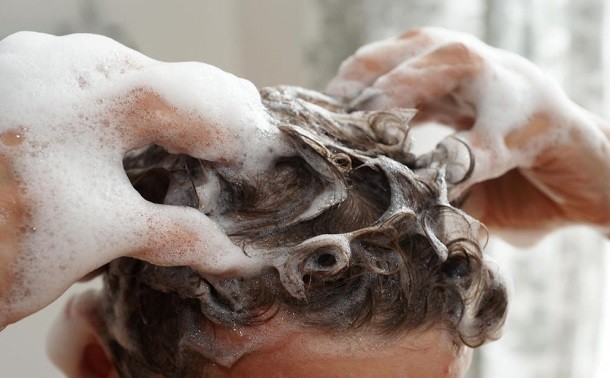Last Updated on August 25, 2020 by Hold the Hairline Team
Does Propecia work? The answer is yes. If you’re looking to halt your hair loss, this is one of the proven heavy hitters of hair loss prevention. Propecia is verified as a potent DHT-inhibitor, eliminating hair loss from the source of the problem. Estimations put the number of Americans at over one million with prescriptions for Propecia to counter their hair loss condition.
Before we get started, please keep in mind this is not medical advice, all decisions before taking a medication such as Propecia should be discussed with your doctor first.
Many people have had a great deal of success combining this drug with minoxidil and ketoconazole. Propecia (Finasteride) works at the root of the problem, significantly decreasing DHT levels. Minoxidil stimulates new hair follicles growth via a topical application on the scalp. Ketoconazole cleanses the scalp, nuking any scalp DHT that wasn’t first destroyed internally by Propecia.
These three treatments, when used together, are very effective at preventing further hair loss. Furthermore, it is even possible to regrow previously lost hair with Propecia.
In this informational page, we link to some of the most popular clinical studies done on Propecia hair loss treatment. We then discuss reasons people may take or not take the drug, our take on its validity as a hair loss solution, and the steps you need to take if you want to get it.
Propecia Studies and Research
T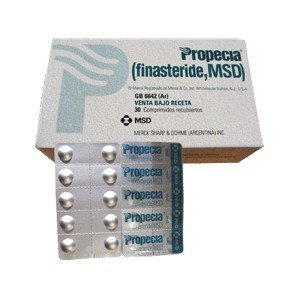 he promising thing about Propecia hair loss treatment is there is a ton of data gathered about its efficacy. Propecia has been shown to reduce scalp DHT (the main antagonist of hair loss) levels by up to 60%. Along with Rogaine, this medication is one of two treatments with the most clinical evidence backing up its claims to prevent further hair loss.
he promising thing about Propecia hair loss treatment is there is a ton of data gathered about its efficacy. Propecia has been shown to reduce scalp DHT (the main antagonist of hair loss) levels by up to 60%. Along with Rogaine, this medication is one of two treatments with the most clinical evidence backing up its claims to prevent further hair loss.
Here is a list of some of the most prominent studies and research [sorted by date ascending]:
- Kaufman, et al. Journal of American Academy of Dermatology, October 1998. “Finasteride in the Treatment of Men with Androgenetic Alopecia.” Find at sciencedirect.com.
- Price, Vera. The New England Journal of Medicine, September 1999. “Treatment of Hair Loss.” Find at nejm.org.
- Drake, et al. Journal of American Academy of Dermatology, October 1999. “Effects of Varying Dosage Finasteride on Scalp & Serum DHT Levels.” Find at webofscience.com.
- Roberts, et al. Journal of American Academy of Dermatology, October 1999. “Clinical Dose-Ranging Studies with Finasteride.” Find at sciencedirect.com.
- European Journal of Dermatology, January 2002. “5-Year Multinational Experience with Finasteride 1mg.” Find at pubmed.gov.
- Arca, et al. Dermatology, US National Library of Medicine, 2004. “Comparative Study of Finasteride and 5% Minoxidil.” Find at pubmed.gov.
- Olsen, et al. Journal of the American Academy of Dermatology, December 2006. “Results of Randomized Placebo-Controlled Study of Dutasteride versus Finasteride.” Find at sciencedirect.com.
- Kaufman, et al. European Journal of Dermatology, August 2008. “Progression of Hair Loss over 5 Years.” Find at jle.com.
- Merck Sharp and Dohme, December 2010. “Effect on Hair Count.” Find at accessdata.fda.gov.
- Darrow, Johnathan. Harvard Medical School, January 2013. “Finasteride as an FDA-Approved Baldness Remedy: Is It Effective?” Find at harvard.edu.
- Hirshburg, et al. The Journal of Clinical and Aesthetic Dermatology. “Adverse Effects and Safety of 5-alpha Reductase Inhibitors (Finasteride, Dutasteride): A Systematic Review.” Find at pubmed.gov.
- Propecia Dosages, Hair Loss Talk, Ongoing. “Clinical Studies on the Effects of Oral Finasteride.” Find at hairlosstalk.com.
Why Doesn’t Everyone with Hair Loss use Propecia?
The truth is, a lot of people have chosen not to use Propecia in their regime despite a large amount of scientific evidence indicating its ability to prevent hair loss. There are three main reasons for this: side effects, hassle, and cost.
Upfront Hassle
Nobody likes going to the doctor.
>>First you have to call your doctor’s office to schedule the appointment.
>>Then when the receptionist asks you the reason for your appointment. Indeed you have to tell him or her hair loss.
>>After that, you have to have a somewhat embarrassing conversation with your doctor.
>>Then of course visiting your local pharmacy for filling the prescription and subsequent refills.
You also have to fully come to terms with your condition and the facts. This can also be hard to do, it means accepting your hair loss isn’t going to stop on its own and your hair is going to miraculously grow back.
Awkwardness
This one goes hand-in-hand with the upfront hassle. Hair loss is not a comfortable thing to talk about for most people enduring the condition.
It’s almost like it is a taboo topic of conversation, and most people will think it’s funny even though it has a huge impact on the person who is experiencing it.
First coming to grips with the fact that your hair is falling out instead of just ignoring it isn’t easy. It can take a while to muster up the courage to communicate about it in a constructive way and find a solution. It’s much easier to pretend that it just isn’t happening or that you still have many years before it becomes really noticeable.
Health Concerns
Many people are worried about the side effects. This is a legitimate concern. While only about 2% experience negative side effects, no one wants to be one of those unlucky few. This is one of the reasons you should talk to your doctor about any concerns you have.
If you are really worried you can schedule regular checkups to monitor your hormones and your progress.
One of the best precautions to take is to see how your body reacts to the drug. Everyone’s biochemistry is different. For example, if you experience side effects discontinue the drug. If you do not experience side effects and you see hair growing back and less falling out then continue the use of the drug.
Obviously medications are a personal decision, some people think the risk is worth it. It is important to go through your doctor as ordering online is risky as you might get something fake.
Cost
This is another leading reason many people are turned off from Propecia. The name brand Propecia is going to run you about $40-80 a month. The good thing about Propecia is that it’s been out for long enough that there are generic options such as Proscar.
Without a doubt, there are some potential downsides to getting and taking Propecia. But one pill a day that is shown to actually work is an attractive option for many individuals losing their hair. Those who have to spend hundreds of dollars on a variety of magical pill cocktails and snake oils can attest to the simplicity of taking something that works.
The Main Reasons People Use Propecia
Here is a video that discusses the popular concerns of Propecia by a hair specialist doctor Robert M. Bernstein. He discusses how it works on the frontal recession as well as health concerns. There is a handful of reasons why Propecia is the method of choice for many wishing to put an end to hair loss.
- Science. The upside is you know Propecia has worked for the majority of men that have used it. The science and results are there. The evidence is verifiable. There is a lot to be said about these factors in the hair loss treatment world. As we all know, there are a lot of scams and ineffective treatments out there. Marketers know sufferers of hair loss are ripe targets for their schemes.
- FDA Approved. The Food and Drug Administration is a regulatory agency that protects public health and safety. Propecia is an FDA approved drug for hair loss. That makes it one of three FDA approved hair loss treatment methods (the others being Minoxidil and HairMax LaserComb). It passed the FDA’s rigorous approval process in 1997.
- Receding Hairline. It works on the entire head. This is a big one because it is one of the only treatments that has been shown to stop a receding hairline and hair loss at the temples. Some treatments have been shown to be more effective on the vertex. Propecia hair loss treatment has had verifiable evidence in helping prevent frontal and temple recession.
Non-Health Benefits of Propecia
- Peace of Mind. This is a factor many people don’t talk about, but nonetheless an important one. If you’re using Propecia, you gain the peace of mind that you are taking action on your hair loss. Whether it works or not, you have the peace of mind that you have done your best in treating your condition. There’s really not any other step you can take after using this and minoxidil unless you want to go to the last resort and bring out the big guns with Avodart.
- Convenience. The ease of taking one pill each morning is rather convenient. Yes, this may same as a contradiction to our earlier point about it being a hassle. But once you get through the initial pain in the ass of receiving the prescription through it becomes relatively easy to use. Pop a pill once every morning during your morning routine and you’re good to go. You don’t have to rub it into your scalp 50 times a day or let your hair soak for 30 minutes in the shower or something annoying like that. Okay, sometimes we exaggerate but you get the idea.
How Well Does Propecia Work? Hold the Hair Line’s Take
Propecia works for 86% of men who used the drug, proving this is a legitimate solution. The American Hair Loss Association recommends Propecia above all other treatments for hair loss. If you’re serious about preventing hair loss, it’s probably worth your time to give Propecia a fair shot.
We stress that going on the proven three treatments is the absolute best way to keep their hair you’ve got and maybe even grow some back. You will likely be able to tell if it is working at least six months of use. The fact of the matter is there are very few hair loss solutions that are backed up with as much evidence as Propecia. Outside of expensive hair transplants, and perhaps Dutasteride (Avodart), it’s the most potent treatment out there. Both of these other treatments have their own list of drawbacks. Propecia can be used by people who are receding, thinning, or just starting to go bald.
How to go about Getting Propecia

Ask about Propecia. Your doctor will explain the risks and benefits of the drug. In addition to Propecia, he may mention Rogaine as an option as well. You may also discuss monitoring hormone levels and other tests if you are concerned about the risks of the drug.
Fill prescription. Go to your pharmacy of choice and fill your prescription.
Take once daily. The easy part, take a pill once daily in the morning or before bed.
Alternative Method to Get Propecia: Online Consultation
An alternative to scheduling an in-person appointment with a doctor is using a service such as Hims where you can schedule a consultation online and receive a prescription if you’re qualified. This is less uncomfortable since you don’t need to get face-to-face with a doctor and explain your hair loss woes. Before checking out and buying Finasteride from Hims you’ll take a medical consultation via an online assessment.
If you’re interested in a prescription, they will match you with an independent physician. This physician will evaluate you and see if you’re a qualified candidate for the prescription product. True enough, the success of their website is bolstered by clever and aesthetically pleasing branding.
But we think Hims went beyond visuals and found a way to remove a lot of friction from this rather embarrassing process. This would help explain why they have grown so quickly in popularity.
In addition to standalone finasteride, Hims offers a subscription service — what they call The Complete Hair Kit featured above. This includes finasteride, shampoo, minoxidil, and hair vitamin.
We’ve got a complete review of the Hims brand and checkout process here.
Proscar vs. Propecia
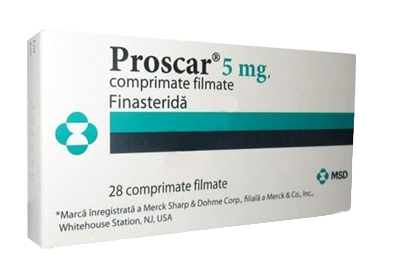
Proscar (Generic Finasteride)
As we mentioned, one of the downsides of Propecia is that it is pretty expensive. An alternative to Propecia is Proscar (which also contains finasteride). This is a generic drug that does exactly the same thing as Propecia and is significantly less expensive. Most doctors will prescribe Proscar as an off label treatment for hair loss. On average, it is about one quarter of the cost of Propecia. Furthermore, sometimes insurance companies will even cover the cost of Finasteride so you’ll only end up having to make a small co-pay payment.
Finasteride pills are 5mg of finasteride whereas Propecia tablets are 1mg of finasteride. Therefore, when people start using Proscar for hair loss, doctors typically advise them to cut the pills into fourths. This equates to taking 1.25mg of Finasteride a day. When you consider the insane cost of some hair loss products this is nearly as good as it gets, cost-wise, for treating the condition of hair loss.
Propecia Dosage
There are studies that indicate lower dosages such as 0.25mg or 0.5mg deliver significant benefits for hair loss sufferers. Whether lower dosages come with significantly lower risks of side effects is yet to be thoroughly studied. What has been extensively studied is 1.0mg and 1.25mg and these dosages have been linked to successful outcomes (men are keeping their hair). What’s the common-sense route here? We think that men should stick to what is normally prescribed and monitor their results. We don’t think individuals should alter their dosage without talking to a doctor first.
This video made by Dr. Niedbalski from NorthWest Hair Restoration in Tacoma, WA can help answer some questions you might have, and give you some ideas about what to ask your own doctor before your appointment.
